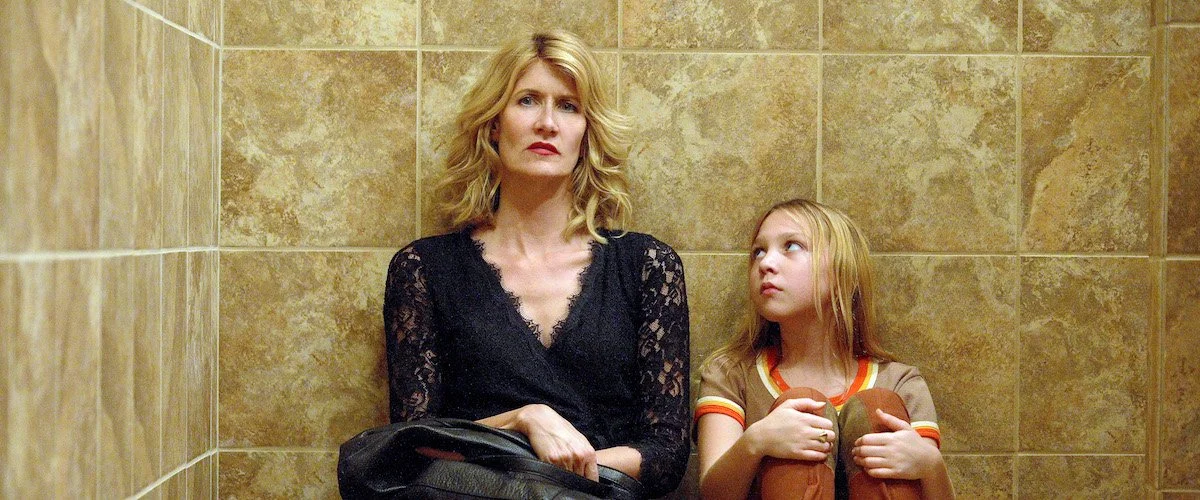The Struggle Toward a New Self
Last week, I came across a New York Times article about the filmmaker Jennifer Fox, who recently disclosed the identity of the high-profile coach who abused her as a girl. Fox had written and directed an Emmy-nominated film about the experience called The Tale, released in 2018, starring Laura Dern and Jason Ritter. At that point, her abuser was still unnamed.
I first saw the film during the pandemic. Despite its haunting content, I watched it three times over the course of a month—not because I’m a masochist (though I have that tendency)—but because I was captivated by how Fox told her harrowing story so well. At the time, I was entrenched in my own storytelling endeavor, the first draft of a memoir detailing experiences from childhood and young adulthood that I was just starting to put language to. The deeper I descended into my own memory, the more curious I became about narrative devices that convey hard truths in creative, authentic ways.
After the film’s release, Jennifer Fox said the story is ultimately about memory. “If we were to go back and talk to our younger self, what would we find?” It was the same question driving my own writing, a question I first explored in the safety of therapy and continued to define on the page thereafter. This question both terrified and compelled me. I’d unconsciously been avoiding it for much of my life.
One of the final scenes of the film seared me. It’s a single image, really, of the adult Jenny and the teenage Jenny, elbow-to-elbow in the frame. It’s the first time we’ve seen them together, even though their stories simultaneously unravel throughout the entire movie. At this moment, I wanted the adult Jenny to wrap her long, willowy arms around her younger self. I wanted the split between old and young, between experience and innocence to be physically bridged. The fact that this didn’t happen was perhaps a decision most authentic to Fox’s journey at that point, which accentuates the reality that reconnecting our past and present selves is not a clean, one-and-done transaction. It’s a courageous and arduous evolution.
Fox’s cinematic memoir illustrates a truth I’m learning in my own writing and concurrently trying to teach my students. (Because I’m usually teaching what I, myself, am still trying to learn!) Last week in class, we examined ways of weaving various timelines and narrative voices into memoir. We discussed how there’s not one, but two protagonists in your memoir. As David Mura so brilliantly states in his craft essay,
There’s the character-you, the one who lived the scenes you are now writing about. The one who was so busy living and surviving they didn’t have language or perspective on what was happening. And then there’s the narrator-you, the person you are now, the older and wiser adult version who is finding the language, making the meaning, and telling the story.
WHOA.
Two protagonists?
This seems so obvious once you think about it. I mean, the above image from The Tale clearly displays two protagonists. The need for both the “character-you” and the “narrator-you” is one of the core things my developmental editor stressed over a year ago in her feedback on my first draft. And yet, this still came as a giant epiphany to me over the past month, which just goes to show that you can see/read something a million times, but until you experience it by doing the work yourself (and feeling all the associated feelings), it doesn’t quite register.
In my first memoir draft, I was so close to my younger self, the character-me. Apparently, it’s common that early drafts are a bit too attached to an earlier consciousness. I’d spent so much of my life trying to silence my younger self, and I suppose I needed to let her talk and wail, to tell her version of things before I could even think about offering my adult perspective. It’s a lot like parenting, in that you have to get on your child’s level first, to hear and validate their experience before reframing things through your adult perspective. Otherwise, your child will feel isolated and everything you say will come off as a boring and heartless lecture.
After my first draft, I knew my younger self’s narrative wasn’t enough. My heart broke that it wasn’t enough. God. I was going to have to essentially rewrite everything, braiding my current adult insights into my past self’s experience. Like the final frame of The Tale, I needed the character-me and the narrator-me to slink down on the cold bathroom floor together, to touch elbows, to eventually make their way toward an embrace. Only through this connection could a compelling narrative voice emerge. I grieved over this reality, because I knew this mingling of past and present protagonists could only happen through deep revision, one uncertain word at a time. It was just as Mary Karr said in The Art of Memoir: “The only way I know to develop a voice is to write your way into one.”
In this way, it seems that narrative voices are created in the same fashion that human beings (and most living things) are created. It requires the coming together of two protagonists, and through that intimate connection, something new and distinct is born. A new self. A new voice. Just as Mura writes,
The past may be filled with tragic events and failures, but the writing creates and embodies a different tale, the struggle towards a new self, alive and existing within the pages of the book.
I’ve realized memoir writing isn’t just about telling your story. It’s about the person you become in the process of the telling, the new voice and home you create within yourself as a result of the journey. The person who finishes the book will not be the same person that started it, and that, perhaps, is the real gift.
In class last week, we read an excerpt from one of my favorite books, The Things They Carried by Tim O’Brien. We discussed how both the past and present protagonists are alive in O’Brien’s writing. He shares the scenes that his younger protagonist survived, but his older protagonist is very much holding the narrative reigns. I love how O’Brien frames the past horrors of Vietnam through an achingly honest lens that his younger self would never have had access to. His adult narrator cradles the tale with retrospection, context, and ultimately, love, ingredients that only come through much time and struggle.
(Some other beloved books that narrate through this experienced, retrospective lens are The Prince of Tides by Pat Conroy and Why Be Happy When You Could Be Normal by Jeannette Winterson.)
I’ll close with this excerpt from The Things They Carried, because I think this says it all:
Forty-three years old, and the war occurred half a life-time ago, and yet the remembering makes it now. And sometimes remembering will lead to a story, which makes it forever. That’s what stories are for. Stories are for joining the past to the future. Stories are for those late hours in the night when you can’t remember how you got from where you were to where you are. Stories are for eternity, when memory is erased, when there is nothing to remember except the story.


